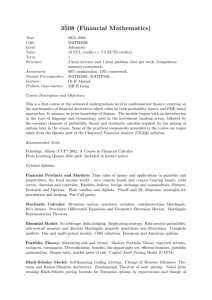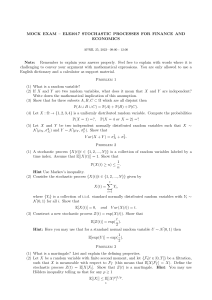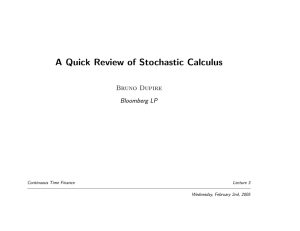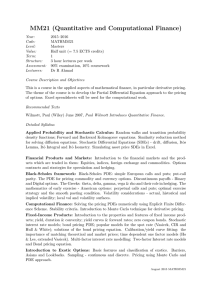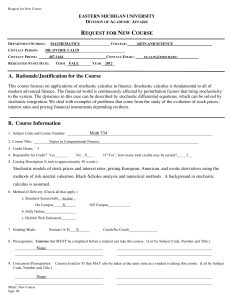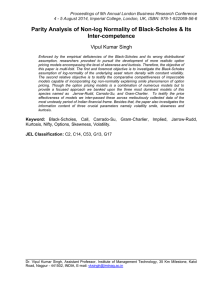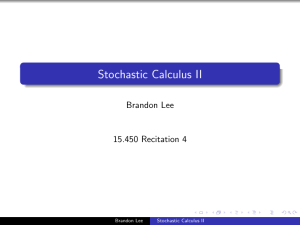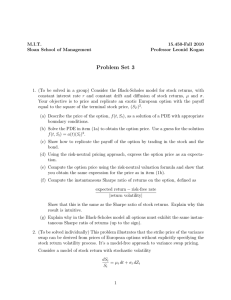MATHG508 Financial Mathematics Syllabus
advertisement
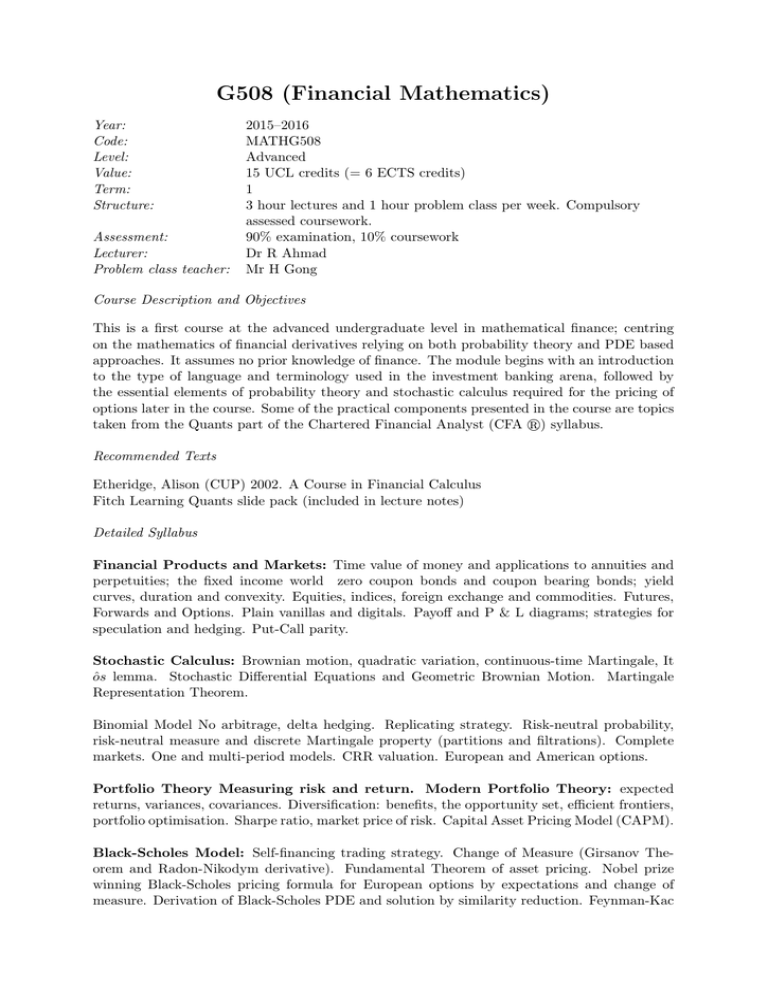
G508 (Financial Mathematics) Year: Code: Level: Value: Term: Structure: Assessment: Lecturer: Problem class teacher: 2015–2016 MATHG508 Advanced 15 UCL credits (= 6 ECTS credits) 1 3 hour lectures and 1 hour problem class per week. Compulsory assessed coursework. 90% examination, 10% coursework Dr R Ahmad Mr H Gong Course Description and Objectives This is a first course at the advanced undergraduate level in mathematical finance; centring on the mathematics of financial derivatives relying on both probability theory and PDE based approaches. It assumes no prior knowledge of finance. The module begins with an introduction to the type of language and terminology used in the investment banking arena, followed by the essential elements of probability theory and stochastic calculus required for the pricing of options later in the course. Some of the practical components presented in the course are topics taken from the Quants part of the Chartered Financial Analyst (CFA r) syllabus. Recommended Texts Etheridge, Alison (CUP) 2002. A Course in Financial Calculus Fitch Learning Quants slide pack (included in lecture notes) Detailed Syllabus Financial Products and Markets: Time value of money and applications to annuities and perpetuities; the fixed income world zero coupon bonds and coupon bearing bonds; yield curves, duration and convexity. Equities, indices, foreign exchange and commodities. Futures, Forwards and Options. Plain vanillas and digitals. Payoff and P & L diagrams; strategies for speculation and hedging. Put-Call parity. Stochastic Calculus: Brownian motion, quadratic variation, continuous-time Martingale, It ôs lemma. Stochastic Differential Equations and Geometric Brownian Motion. Martingale Representation Theorem. Binomial Model No arbitrage, delta hedging. Replicating strategy. Risk-neutral probability, risk-neutral measure and discrete Martingale property (partitions and filtrations). Complete markets. One and multi-period models. CRR valuation. European and American options. Portfolio Theory Measuring risk and return. Modern Portfolio Theory: expected returns, variances, covariances. Diversification: benefits, the opportunity set, efficient frontiers, portfolio optimisation. Sharpe ratio, market price of risk. Capital Asset Pricing Model (CAPM). Black-Scholes Model: Self-financing trading strategy. Change of Measure (Girsanov Theorem and Radon-Nikodym derivative). Fundamental Theorem of asset pricing. Nobel prize winning Black-Scholes pricing formula for European options by expectations and change of measure. Derivation of Black-Scholes PDE and solution by similarity reduction. Feynman-Kac formula. Dividends and time dependent parameters. Introduction to risk management and the greeks delta, gamma, theta, rho, vega. September 2015 MATHG508
